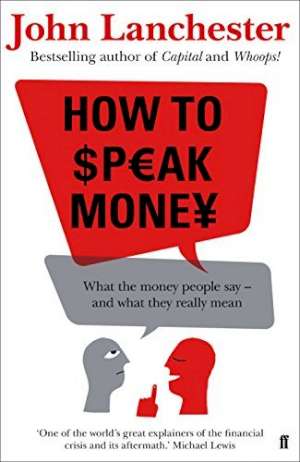31 March 2015
How to Speak Money
John Lanchester
2014, Faber, 304 pages, £17.99
ISBN 9780571309818
Reviewer: Anna Leach, Head of Economic Analysis, CBI

This book provides a guide to the world of finance and economics from a self-styled non-expert who seeks to bridge the divide between experts and the general public. In so doing, the book bounces back and forth between attacking and defending the subject under discussion. The author starts from the premise that professionals set out deliberately to differentiate themselves from non-professionals through their use of unnecessarily complex language. So he really tries to empathise with the frustrations of the reader, before going onto explain the inherent complexities in finance and economics. Yet he sets out to debunk the idea that the complex terminology being used to describe financial developments is itself malign in its construction. He uses his own experience in gaining an understanding of money and economics to reassure the reader that the layman can indeed pick it up. He offers another theory as to why the language of money is so off-putting: that perhaps the very way in which it strips out morality – judgements over right and wrong – make it seem alien to many.
The opening section of the book ranges far and wide: interwoven with some early explanations of financial and economic concepts, are musings on the development of financial language, the process of deconstructing terminology and the diversity of economic thought. The author has a thoroughly readable style, helping to bring the reader with him through a combination of clear explanations of financial terminology and “colourful” language (p42). For example, when noting that economists seldom agree on any of the significant economic problems of the times, he notes it’s enough to make one “…throw up the hands and announce that the whole subject is bollocks.”
The actual ‘lexicon’ starts in the middle of the book. But while his explanation of complex financial concepts, such as hedging and securitisation, is extremely clear and simple, his explanations of some fundamental economic concepts are sometimes lacking. For example, his description of the balance of payments is pretty brief, does not clearly explain its relationship with the trade balance or mention the income balance. And his description of competitiveness takes up less than half a page, which is less than he devotes to explaining the ‘hot waitress index’.
The book ends by ruminating on the future path of the global economy and what the successor to free market economics will be. The Chinese economy is held up as an example – although not necessarily an exemplar – of how a country can grow successfully without operating as a traditionally free market. A lot of time is spent blaming the free market for the growth in inequality in recent years. This is a particular area where his analysis is incomplete. He notes how successful emerging markets have been in bringing substantial numbers of people out of poverty in recent years. But a consequence of that has been the rise in inequality in advanced economies. The expansion in the global pool of labour has held down the wages of the lower end of the income scale while providing companies with new resources and growth opportunities.
Overall, though, a lucid and engaging primer for the non-expert and a thought-provoking refresher for the expert.
